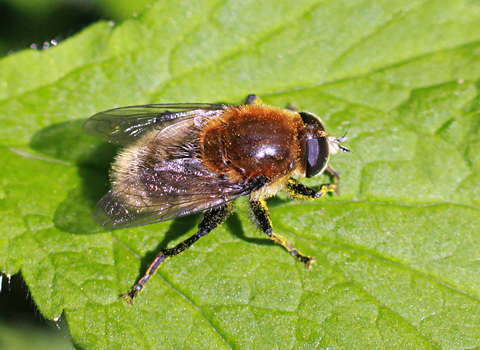
Narcissus Bulb Fly ©Penny Frith
Narcissus bulb fly
With ginger hairs, dark banding and a cream tail, the Narcissus bulb fly looks like a bumble bee, but is harmless to us. This mimicry helps to protect it from predators while it searches for nectar in gardens.
Enw gwyddonol
Merodon equestrisPryd i'w gweld
March to AugustSpecies information
Category
Ystadegau
Length: 1.0-1.5cmCommon.
